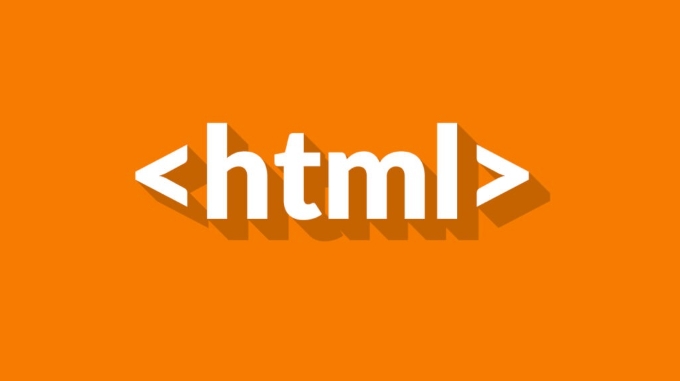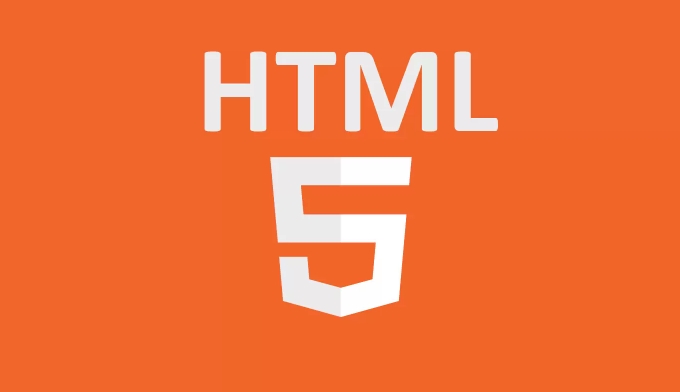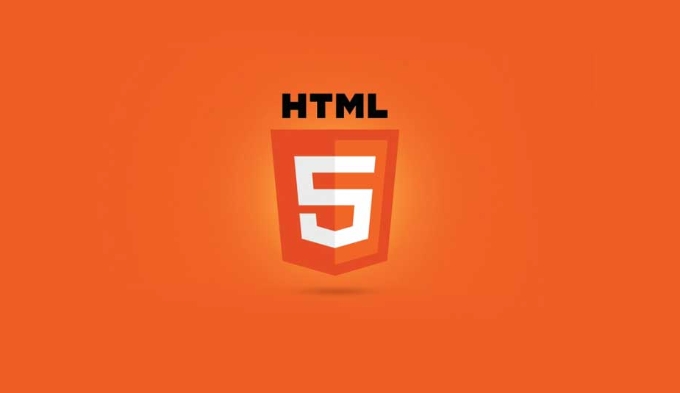 Web Front-end
Web Front-end
 HTML Tutorial
HTML Tutorial
 What are the different heading tags in HTML ( to ) and how to use them?
What are the different heading tags in HTML ( to ) and how to use them?
What are the different heading tags in HTML ( to ) and how to use them?
Jul 06, 2025 am 12:20 AMHTML title tags from h1 to h6 are used to define web page structure to improve readability and SEO effects. 1. h1 represents the main title of the page and should be used only; 2. h2 to h6 are used for layered subtitles, such as large content areas, subsections and subdivided content; 3. When using it, you must maintain logical order to avoid skipping or abuse of style control; 4. Use keywords reasonably in combination with SEO; 5. Correct use of title tags will help access auxiliary functions. Reasonable organization of title levels not only makes the content clear, but also makes it easier for search engines and users to understand the page structure.

HTML's title tag (from <h1></h1> to <h6></h6> ) is an element used to define different hierarchical titles in a web page. They not only make the text look bigger and thicker, but more importantly, it helps browsers and search engines understand the page structure. Using these tags rationally can improve web page readability and SEO effect.
 to
to ) and how to use them?" />
<h1></h1> : Main title, the most important title of the page
<h1></h1> : Main title, the most important title of the page <h1></h1> is the highest-level title, usually used to represent the theme or core content of the entire page. It is best to use <h1></h1> for a page only once, so that search engines can easily identify what your main content is.
 to
to ) and how to use them?" />
- For example, in a blog post, the title of the article can be used
<h1></h1> .
- On the home page, the website name or main tagline can be
<h1></h1> .
<h1></h1> .<h1></h1> . Be careful not to reuse <h1></h1> , otherwise it will confuse search engines which point is the key.
<h2></h2> to <h6></h6> : Subtitle, used for content hierarchy
Starting from <h2></h2> , there are subtitles at various levels. Generally speaking:
 to
to ) and how to use them?" />
-
<h2></h2> Used to divide large content areas, such as "product introduction" and "user review";
-
<h3></h3> can be used as the subsection title under <h2></h2> ;
- The levels of
<h4></h4> to <h6></h6> are getting lower and lower, which is suitable for further subdividing content.
<h2></h2> Used to divide large content areas, such as "product introduction" and "user review";<h3></h3> can be used as the subsection title under <h2></h2> ;<h4></h4> to <h6></h6> are getting lower and lower, which is suitable for further subdividing content.For example: If you wrote an article about healthy eating:
-
<h1></h1>can be "Five Principles of Healthy Eating" -
<h2></h2>can be "balanced nutrition intake" -
<h3></h3>can be "the action of protein" -
<h4></h4>can be a "high-quality protein source"
This way, the content is organized layer by layer, not only can people see it clearly, but it is also easier for machines to understand it.
Tips and precautions for use
- Maintain logical order : Don't jump, for example, jump directly from
<h1></h1>to<h3></h3>, which is not conducive to clear structure. - Avoid abuse of title tags for style control : Some people use
<h2></h2>or<h3></h3>casually in order to make the characters bigger, which is wrong. CSS should be used to control the style. - Consider keyword layout from the perspective of SEO : you can naturally add some keywords to
<h2></h2>and<h3></h3>, but don't pile them up. - Accessibility Friendly : Screen readers navigate the page according to the title structure, so proper use can help with barrier-free access.
Basically that's it. The title tag is not complicated, but it is very important to use it correctly.
The above is the detailed content of What are the different heading tags in HTML ( to ) and how to use them?. For more information, please follow other related articles on the PHP Chinese website!

Hot AI Tools

Undress AI Tool
Undress images for free

Undresser.AI Undress
AI-powered app for creating realistic nude photos

AI Clothes Remover
Online AI tool for removing clothes from photos.

Clothoff.io
AI clothes remover

Video Face Swap
Swap faces in any video effortlessly with our completely free AI face swap tool!

Hot Article

Hot Tools

Notepad++7.3.1
Easy-to-use and free code editor

SublimeText3 Chinese version
Chinese version, very easy to use

Zend Studio 13.0.1
Powerful PHP integrated development environment

Dreamweaver CS6
Visual web development tools

SublimeText3 Mac version
God-level code editing software (SublimeText3)

Hot Topics
 Explain the purpose of the role attribute in ARIA.
Jun 14, 2025 am 12:35 AM
Explain the purpose of the role attribute in ARIA.
Jun 14, 2025 am 12:35 AM
ARIA's role attribute is used to define the role of web elements and improve accessibility. 1. Role attribute helps assistive technology to understand the functions of elements, such as buttons, navigation, etc. 2. Use role attributes to assign specific roles to non-semantic HTML elements. 3. The role attribute should be consistent with the element behavior and be verified by the accessibility tool test.
 HTML and Design: Creating the Visual Layout of Websites
Jun 14, 2025 am 12:39 AM
HTML and Design: Creating the Visual Layout of Websites
Jun 14, 2025 am 12:39 AM
How to create a website layout? 1. Use HTML tags to define the content structure, such as, ,. 2. Control styles and positions through CSS, using box model, float or Flexbox layout. 3. Optimize performance, reduce HTTP requests, use cache and optimize images, and ensure responsive design.
 How can you ensure your HTML code is readable and maintainable?
Jun 10, 2025 am 12:06 AM
How can you ensure your HTML code is readable and maintainable?
Jun 10, 2025 am 12:06 AM
Improve the readability and maintainability of HTML code can be achieved through the following steps: 1. Use semantic tags, such as, etc. to make the code structure clear and improve SEO effect; 2. Keep the code formatted and use consistent indentation and spaces; 3. Add appropriate comments to explain the code intention; 4. Avoid excessive nesting and simplify the structure; 5. Use external style sheets and scripts to keep the HTML concise.
 How do I stay up-to-date with the latest HTML standards and best practices?
Jun 20, 2025 am 08:33 AM
How do I stay up-to-date with the latest HTML standards and best practices?
Jun 20, 2025 am 08:33 AM
The key to keep up with HTML standards and best practices is to do it intentionally rather than follow it blindly. First, follow the summary or update logs of official sources such as WHATWG and W3C, understand new tags (such as) and attributes, and use them as references to solve difficult problems; second, subscribe to trusted web development newsletters and blogs, spend 10-15 minutes a week to browse updates, focus on actual use cases rather than just collecting articles; second, use developer tools and linters such as HTMLHint to optimize the code structure through instant feedback; finally, interact with the developer community, share experiences and learn other people's practical skills, so as to continuously improve HTML skills.
 How do I use the element to represent the main content of a document?
Jun 19, 2025 pm 11:09 PM
How do I use the element to represent the main content of a document?
Jun 19, 2025 pm 11:09 PM
The reason for using tags is to improve the semantic structure and accessibility of web pages, make it easier for screen readers and search engines to understand page content, and allow users to quickly jump to core content. Here are the key points: 1. Each page should contain only one element; 2. It should not include content that is repeated across pages (such as sidebars or footers); 3. It can be used in conjunction with ARIA properties to enhance accessibility. Usually located after and before, it is used to wrap unique page content, such as articles, forms or product details, and should be avoided in, or in; to improve accessibility, aria-labeledby or aria-label can be used to clearly identify parts.
 How do I create a basic HTML document?
Jun 19, 2025 pm 11:01 PM
How do I create a basic HTML document?
Jun 19, 2025 pm 11:01 PM
To create a basic HTML document, you first need to understand its basic structure and write code in a standard format. 1. Use the declaration document type at the beginning; 2. Use the tag to wrap the entire content; 3. Include and two main parts in it, which are used to store metadata such as titles, style sheet links, etc., and include user-visible content such as titles, paragraphs, pictures and links; 4. Save the file in .html format and open the viewing effect in the browser; 5. Then you can gradually add more elements to enrich the page content. Follow these steps to quickly build a basic web page.
 What is an HTML tag?
Jun 13, 2025 am 12:36 AM
What is an HTML tag?
Jun 13, 2025 am 12:36 AM
HTMLtagsareessentialforstructuringwebpages.Theydefinecontentandlayoutusinganglebrackets,ofteninpairslikeand,withsomebeingself-closinglike.HTMLtagsarecrucialforcreatingstructured,accessible,andSEO-friendlywebpages.
 How do I create checkboxes in HTML using the element?
Jun 19, 2025 pm 11:41 PM
How do I create checkboxes in HTML using the element?
Jun 19, 2025 pm 11:41 PM
To create an HTML checkbox, use the type attribute to set the element of the checkbox. 1. The basic structure includes id, name and label tags to ensure that clicking text can switch options; 2. Multiple related check boxes should use the same name but different values, and wrap them with fieldset to improve accessibility; 3. Hide native controls when customizing styles and use CSS to design alternative elements while maintaining the complete functions; 4. Ensure availability, pair labels, support keyboard navigation, and avoid relying on only visual prompts. The above steps can help developers correctly implement checkbox components that have both functional and aesthetics.





